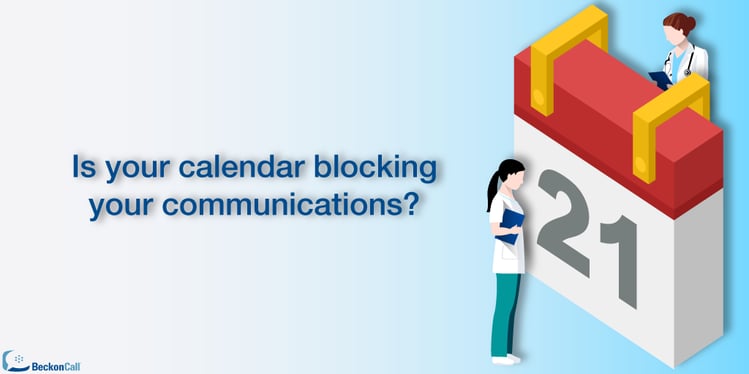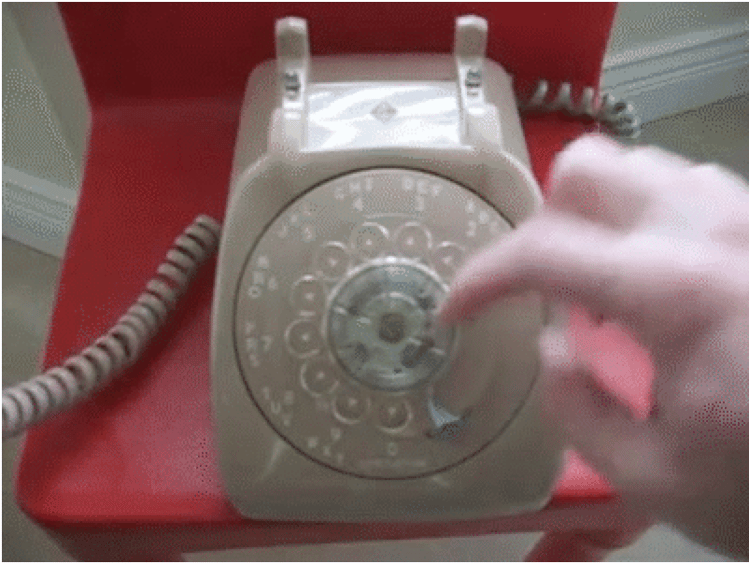 Posted by Dr. Becker on Dec 29, 2016 11:18:05 AM
Posted by Dr. Becker on Dec 29, 2016 11:18:05 AM

A few weeks ago we published a post saying that HIPAA compliance in a medical communications platform isn’t enough for that platform to be useful, or even interesting. In that post, we talked about the need to ensure that the secure information being transmitted reaches the correct end-user. Otherwise, what’s the point?
What we didn’t really talk about is one of the roadblocks to getting information to the right person: on-call schedules. Scheduling your group seems like just a management or housekeeping problem. However, it’s far more. It’s a significant communications problem, because a broken schedule adds friction to the process of getting medical information to that end-user, the on-call physician.
Think about it like this: No one ever asks who is on-call for fun. If they ask, it’s because they need to communicate with that provider.
That’s an obvious statement as you read it on your screen, but it gets lost in practice. Put another way, if it was so easy to find out who is on-call, no one would need to ask. Even though it should be one of the easiest steps in a communication workflow, getting in touch with the right person can be time-consuming and prone to error.
How many times has some version of the following been heard when trying to contact an on-call physician:
“Why didn’t you call sooner?”
“I’m in Montana.”
“Jim’s on-call tonight.”
“<No answer>…<redial>…<no answer>…<dial alternate number>…”
We know from surveys that these types of situations cost around 30 minutes of time that should be spent dealing with the medical issue at hand. Therefore, smoothing the way for intra-office communications necessitates having a central repository where your practice can manage and access on-call schedules so that it’s easy to find out who to contact when a situation with a patient arises.
Additionally, mistakes at the beginning of a process tend to compound as one goes through the rest of the process. Finding out who is on-call is one of the first steps in the broader communications workflow. If mistakes are made when someone is simply trying to find the right person to call, it’s possible that the resulting stress and confusion could lead to further problems.
Instead, relative to the rest of the process of communicating patient information to the on-call physician, figuring out who that physician is should be effortless. We’re almost two decades into the 21st Century, after all. The question, “who is on-call?” is based on the assumption of old technology. A nurse only* needs to know who he should call so that he can find that person’s information in his phone and then, well, call her. It’s the slightly less outdated version of pulling out a paper directory and rotary-dialing a number. There is no reason why any energy should be spent repeating a task that, in theory, was already completed two months ago when the practice manager created the on-call schedule. It should just happen.

Fortunately, it can “just happen.” A nurse can simply make the call or send the message without having to manually direct it to the correct recipient. If a practice has intelligent, schedule-based message routing in place for all of its intra-office communications, the focus can be entirely on the content and not the logistics.
At the top, we described on-call scheduling as a communications problem. If the schedule is broken, downstream communications will be, as well. What a good on-call management system does is layer all communications on top of the schedule. Any changes to the latter will automatically propagate to the former. Finding the right person becomes irrelevant because they were already found and then programmed in. Now all the nurse has to do is tell the person on the other end what’s happening, with no distractions.
This layering has become a hallmark of technology in many verticals, including consumer products. For example, Google has integrated its suite of services so that events found in emails are automatically sent to our calendars. We don’t have to remember to write them down or copy them over into a separate application. Why not do the same in the context of a medical office, where any barrier, no matter how slight, can have a negative impact? With the right on-call management and communications app, you can create a schedule and then route all calls and messages based on that framework. All of a sudden, your medical team can operate as such to solve the real problem - patient health - instead of the entirely unnecessary problem of whose number to dial.
(*Yes, this is rhetorical oversimplification.)
Topics: Care team communication